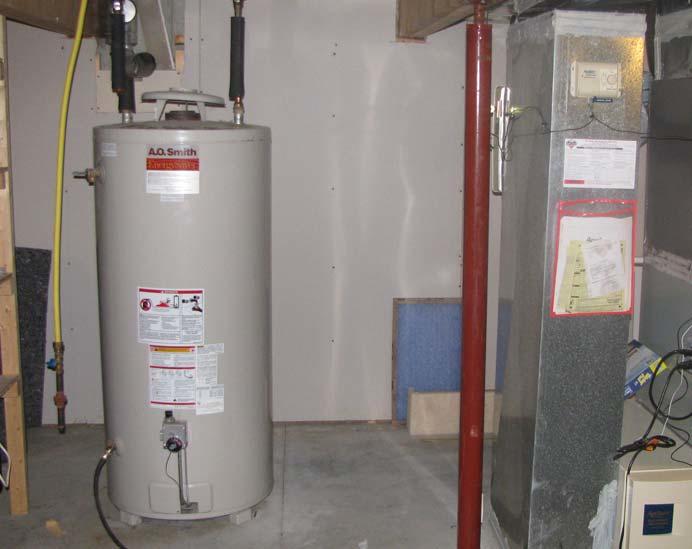Useful Techniques for Caring for Your Home's Hot Water System
Useful Techniques for Caring for Your Home's Hot Water System
Blog Article
We've stumbled upon this article pertaining to How to Maintain a Hot Water Heater in a Few Simple Steps down the page on the internet and figured it made perfect sense to relate it with you on this site.

Warm water is essential for day-to-day comfort, whether it's for a rejuvenating shower or cleaning meals. To guarantee your hot water system runs successfully and lasts much longer, normal upkeep is essential. This write-up provides functional tips and understandings on how to preserve your home's warm water system to avoid interruptions and pricey fixings.
Introduction
Maintaining your home's hot water system could appear overwhelming, yet with a couple of straightforward steps, you can ensure it operates smoothly for several years to come. This guide covers everything from comprehending your warm water system to DIY maintenance ideas and recognizing when to call in expert help.
Relevance of Maintaining Your Hot Water System
Routine upkeep not just expands the lifespan of your warm water system but also ensures it operates effectively. Disregarding upkeep can lead to reduced effectiveness, greater power costs, and also early failing of the system.
Signs Your Hot Water System Requirements Upkeep
Recognizing when your warm water system requires focus can protect against significant issues. Look out for indications such as inconsistent water temperature, unusual noises from the heating unit, or rusty water.
Purging the Hot Water Heater
Purging your hot water heater eliminates sediment accumulation, improving effectiveness and extending its life.
Checking and Replacing Anode Rods
Anode rods avoid corrosion inside the tank. Inspecting and replacing them when worn out is essential.
Complex Issues Calling For Specialist Assistance
Examples include major leaks, electric issues, or if your water heater is regularly underperforming.
Routine Specialist Maintenance Benefits
Specialist maintenance can include comprehensive inspections, tune-ups, and making certain compliance with security requirements.
Examining and Adjusting Temperature Setups
Adjusting the temperature level settings guarantees optimal efficiency and security.
DIY Tips for Upkeep
You can do several maintenance jobs on your own to keep your warm water system in top condition.
Looking for Leaks
Consistently check pipes and links for leaks, as these can cause water damages and higher costs.
Understanding Your Warm Water System
Before diving right into maintenance tasks, it's practical to comprehend the standard components of your warm water system. Generally, this consists of the water heater itself, pipelines, anode rods, and temperature level controls.
Monthly Maintenance Tasks
Routine month-to-month checks can assist capture minor concerns before they rise.
Checking Pressure Relief Valves
Evaluating the stress relief valve guarantees it functions properly and stops too much pressure build-up.
Insulating Pipes
Shielding hot water pipes reduces warm loss and can conserve energy.
When to Call an Expert
While do it yourself maintenance is helpful, some issues call for professional know-how.
Conclusion
Routine upkeep of your home's warm water system is important for effectiveness, longevity, and expense financial savings. By adhering to these tips and understanding when to look for specialist help, you can make sure a reliable supply of hot water without unforeseen disturbances.
How to Maintain an Instant Hot Water Heater
Before tinkering with your hot water heater, make sure that it’s not powered on. You also have to turn off the main circuit breaker and shut off the main gas line to prevent accidents. Also turn off the water valves connected to your unit to prevent water from flowing into and out of the appliance. 2. When you’re done, you have to detach the purge valves’ caps. These look like the letter “T†and are situated on either side of the water valves. Doing so will release any pressure that has accumulated inside the valves while at the same time avoid hot water from shooting out and burning your skin. 3. When the purge valves’ caps are removed, you have to connect your hosing lines to the valves. Your unit should have come with three hoses but if it didn’t, you can purchase these things from any hardware or home repair shops. You can also get them from retail stores that sell water heating systems. Read the user’s manual and follow it to complete this task properly. When the hosing lines are connected, open the purge port’s valves. 4. You should never use harsh chemical cleaners or solutions when cleaning your unit. Make use of white vinegar instead. It should be undiluted and you’ll probably use about 2 gallons. 5. Now flush your water heater. This task should probably take about 40 minutes. We can’t give you specific directions for this because the procedure is carried out depending on the type, model and brand of your heater. With that being said, refer to the user’s manual. 6. When you’re done draining the unit, you have to turn off the purge port valves again. Remove the hosing lines that you earlier installed on each of the water valves. Put the valve caps (purge port) back in their respective places and be very careful so as not to damage the rubber discs that are found inside these caps. 7. Now that everything’s back in place, check your user’s manual again to find out how to reactivate your water heating system. 8. Once it is working, turn one of your hot water faucets on just to let air pass through the heater’s water supply pipes. Leave the tap on until water flows smoothly out of it. https://www.orrplumbing.com/blog/2014/september/how-to-maintain-an-instant-hot-water-heater/

As a fervent person who reads on Tips For Maintaining Your Hot Water Heater, I figured sharing that article post was appropriate. Do you know anybody else who is curious about the subject? Feel free to share it. We recognize the value of reading our article about What Kind of Maintenance Do Water Heaters Need?.
Schedule Services Report this page